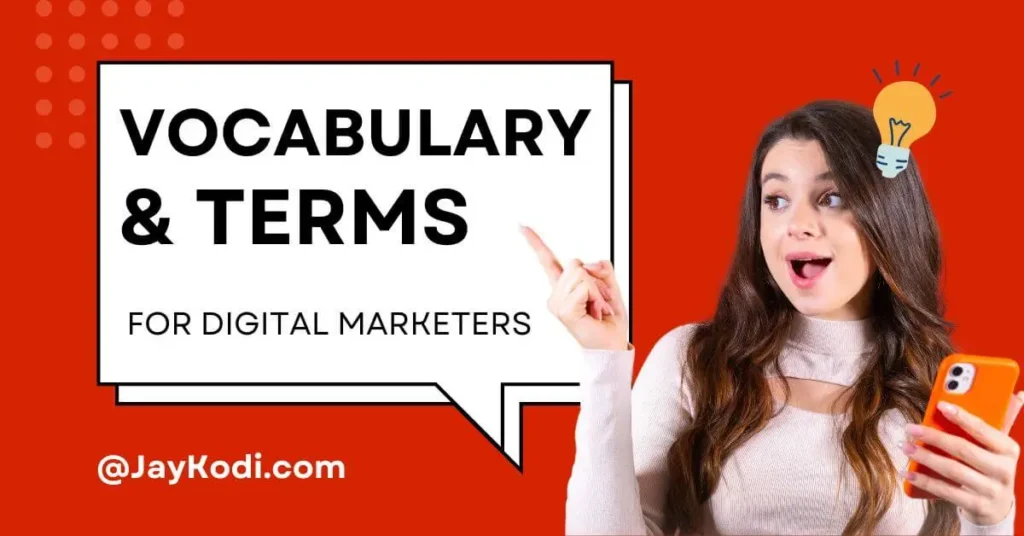Expanding upon the foundational vocabulary introduced in Module 1, here are additional key terms essential for understanding digital marketing:

1. Search Engine Optimization (SEO): The practice of enhancing a website’s visibility on search engine results pages (SERPs) through organic (non-paid) methods. This involves optimizing website content, structure, and technical elements to rank higher for relevant search queries.
2. Pay-Per-Click (PPC): An online advertising model where advertisers pay a fee each time their ad is clicked. It’s a way of buying visits to your site rather than attempting to earn them organically.
3. Content Marketing: A strategic marketing approach focused on creating and distributing valuable, relevant, and consistent content to attract and retain a clearly defined audience, ultimately driving profitable customer action.
4. Social Media Marketing (SMM): The use of social media platforms to promote products or services, engage with existing customers, and reach new audiences. This includes activities like posting text and image updates, videos, and other content that drives audience interaction.
5. Conversion Rate Optimization (CRO): The process of increasing the percentage of website visitors who complete a desired action, such as making a purchase or filling out a form. This involves understanding how users navigate your site, what actions they take, and what’s stopping them from completing your goals.
6. Key Performance Indicators (KPIs): Measurable values that demonstrate how effectively a company is achieving key business objectives. In digital marketing, KPIs might include metrics like click-through rates, conversion rates, or return on investment.
7. Bounce Rate: The percentage of visitors who navigate away from a website after viewing only one page. A high bounce rate may indicate that the site’s content isn’t engaging or relevant to its visitors.
8. Call to Action (CTA): A prompt on a website that tells the user to take some specified action. Examples include “Sign Up,” “Buy Now,” or “Learn More.” Effective CTAs can significantly increase conversion rates.
9. Customer Relationship Management (CRM): A technology for managing all your company’s relationships and interactions with current and potential customers. The goal is to improve business relationships to grow your business.
10. Affiliate Marketing: A performance-based marketing strategy where a business rewards affiliates for each visitor or customer brought by the affiliate’s own marketing efforts.
11. Influencer Marketing: A form of social media marketing involving endorsements and product placements from influencers—individuals or organizations with a purported expert level of knowledge or social influence in their field.
12. Native Advertising: A type of advertising that matches the form and function of the platform upon which it appears. Unlike display ads or banner ads, native ads don’t really look like ads. They look like part of the editorial flow of the page.
13. Return on Investment (ROI): A performance measure used to evaluate the efficiency or profitability of an investment. In digital marketing, it refers to the revenue generated from marketing activities relative to the cost of those activities.
14. Search Engine Marketing (SEM): A form of internet marketing that involves the promotion of websites by increasing their visibility in search engine results pages, primarily through paid advertising.
15. User-Generated Content (UGC): Any form of content—text, posts, images, videos, reviews, etc.—created by users of a platform or service and made publicly available to others.
16. A/B Testing: A method of comparing two versions of a webpage or app against each other to determine which one performs better. It’s a way to test hypotheses and improve conversion rates.
17. Click-Through Rate (CTR): The ratio of users who click on a specific link to the number of total users who view a page, email, or advertisement. It’s commonly used to measure the success of an online advertising campaign.
18. Cost Per Acquisition (CPA): A marketing metric that measures the aggregate cost to acquire one paying customer on a campaign or channel level.
19. Landing Page: A standalone web page created specifically for a marketing or advertising campaign. It’s where a visitor “lands” after clicking on a link in an email or ads from Google, Bing, YouTube, Facebook, Instagram, Twitter, or similar places on the web.
20. Search Engine Results Page (SERP): The page displayed by a search engine in response to a user’s search query. It includes a list of results that are relevant to the query, including organic search results, paid ads, and featured snippets.
Understanding these terms is crucial for navigating the digital marketing landscape effectively.

